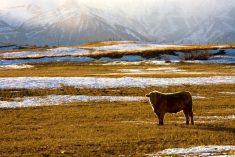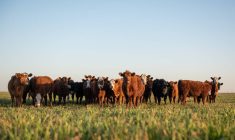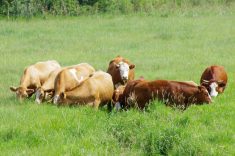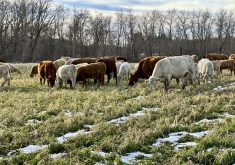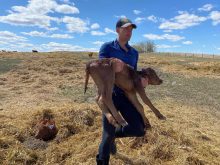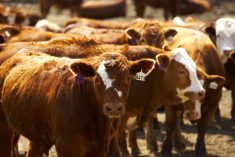Anew industry study concludes a voluntary BSEtesting program for cattle could help boost Canada’s beef exports to Asia.
But it cautions that BSE-tested beef would only be a niche market and the demand for it might be limited.
Testing alone may not fully restore Canada’s beef markets lost to BSE in Japan and other Asian countries, says the study by the George Morris Centre in Guelph, Ontario.
But it’s still worth considering, said Al Mussell, the study’s lead author.
Read Also

Pig transport stress costs pork sector
Popular livestock trailer designs also increase pig stress during transportation, hitting at meat quality, animal welfare and farm profit, Agriculture and Agri-Food Canada researcher says
“We think this has got potential. I think it needs to be explored further,” Mussell said following the study’s release March 31.
“I think it does give the impetus for people to take a serious look at it and say, hey, this is something we could take advantage of.”
COSTS AND BENEFITS
The study funded by PrioNet Canada, the Alberta Prion Research Institute and the Alberta Livestock and Meat Agency weighed the costs and benefits of voluntarily testing cattle for BSE.
It found the cost fairly low – just over $40 a head, or about five cents a pound carcass weight. That wouldn’t burden processors with huge added expenses and “drag down the operation of a beef plant,” Mussell said.
He said Japanese importers have periodically asked for BSE-tested beef over the past five years, so the demand for it should be there.
But whether the economic benefits of testing outweigh the cost is hard to say.
A 2005 analysis by Rancher’s Beef, an Alberta processor no longer in business, concluded BSE testing would increase the value of beef sold to Japan by $75.71 per head.
NOT A PREMIUM
But that would not be an actual price premium. It would just reflect the fact that prices for certain beef cuts are higher in Japan than in Canada, says the George Morris study.
“There are no price premiums for tested product,” it says.
But it adds that tested beef could increase market share in Japan if it were allowed. So the returns would be greater.
The only way to test a beef carcass for BSE is post-mortem. A BSE test for live animals is still years away.
The 2003 discovery of BSE in Alberta severely hurt Canada’s beef export sales to Asia and other countries. Japan currently imports Canadian beef only from cattle under 21 months of age. South Korea continues to ban beef from Canada altogether. That case is currently before a World Trade Organization dispute panel.
The Canadian Food Inspection Agency administers a BSE control program, which includes removing specific risk material (SRMs) from beef carcasses before processing and banning meat and bone meal feed for cattle.
This “extraordinarily conservative” risk assessment may actually hinder voluntary testing, the study suggests.
BASED ON SCIENCE
It says testing works against Canada’s position that trade rules must be based on science, not customer preference. CFIA does not support testing and needs to be persuaded that it would help exports. Testing could result in more positive BSE cases and affect Canada’s “controlled risk” status for the disease.
But Mussell said Canada already exceeds science-based procedures for other commodities and BSE testing would be no different.
“We’re willing to separate and export GM-free soybeans from generic soybeans. We have a protocol for hormone-free beef with the EU. That’s not science based,” he said.
“If you could show that this could be a big benefit to our industry at really very little risk, then you would expect (CFIA) to come on side with that.”
Mussell acknowledged BSE testing carries some risks but said not testing has some risks as well.
“By doing nothing, what do you get?” [email protected]
———
“Wethinkthishasgotpotential.”
– AL MUSSELL, GEORGE MORRIS CENTRE






